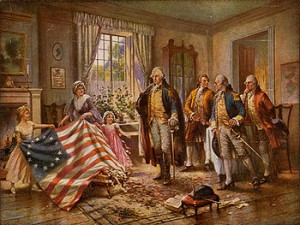
Betsy Ross presenting the first American flag to George Washington by Edward Percy Moran
On this day in 1836, the woman widely credited with making the first American flag, Betsy Ross, died in Philadelphia, Pennsylvania at the age of 84. Born Elizabeth Griscom on 1 January 1752 in Philadelphia. Ross married three times; John Ross (1773 – 1775 his death), Joseph Ashburn (1777 – 1782 his death), John Claypoole (1783 – 1817 his death). 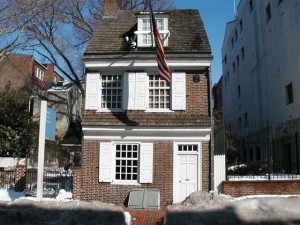
The Final Footprint – Ross’s body was first buried at the Quaker burial ground on South 5th Street in Philadelphia. Twenty years later, her remains were exhumed and reburied in the Mt. Moriah Cemetery in the Cobbs Creek Park section of Philadelphia. In preparation for the United States Bicentennial, the city ordered the remains of Ross and her third husband, John Claypoole, moved to the courtyard of the Betsy Ross House in Philadelphia in 1975; however, workers found no remains under her tombstone. Bones found elsewhere in the family plot were deemed to be hers and were re-interred in the current grave visited by tourists at the Betsy Ross House.
#RIP #OTD in 1948 Indian lawyer, anti-colonial nationalist, political ethicist who employed nonviolent resistance to lead the campaign for India’s independence, Mahātmā Gandhi; assassinated by gunshots; Birla House (now Gandhi Smriti), New Delhi, aged 78. Cremated remains immersed/scattered: Sangam at Allahabad; at the source of the Nile River near Jinja, Uganda; Girgaum Chowpatty. An urn is at the palace of the Aga Khan in Pune and another in the Self-Realization Fellowship Lake Shrine in Los Angeles. The place near Yamuna river where he was cremated is the Rāj Ghāt memorial in New Delhi. All heads of state are brought here to lay garlands in his memory.
 On this day in 1972, in the Bogside area of Derry, Northern Ireland, 26 civil-rights protesters and bystanders were shot by soldiers of the British Army. Thirteen males, seven of whom were teenagers, died immediately or soon after, while the death of another man four-and-a-half months later was attributed to the injuries he received on that day. Two protesters were also injured when they were run down by army vehicles. Five of those wounded were shot in the back. The incident occurred during a Northern Ireland Civil Rights Association march; the soldiers involved were members of the First Battalion of the Parachute Regiment (1 Para). Two investigations have been held by the British government. The Widgery Tribunal, held in the immediate aftermath of the event, largely cleared the soldiers and British authorities of blame. Widgery described the soldiers’ shooting as “bordering on the reckless” but was widely criticised. The Saville Inquiry, chaired by Lord Saville of Newdigate, was established in 1998 to reinvestigate the events. Following a 12-year inquiry, Saville’s report was made public on 15 June 2010. The report found that all of those shot were unarmed, and that the killings were both “unjustified and unjustifiable.” On the publication of the Saville report the British prime minister, David Cameron, made a formal apology on behalf of the United Kingdom. The Provisional Irish Republican Army’s (IRA) campaign against the partition of Ireland had begun in the two years prior to Bloody Sunday, but public perceptions of the day boosted the status of, and recruitment into, the organisation. Bloody Sunday remains among the most significant events in the Troubles of Northern Ireland, chiefly because those who died were shot by the British army rather than paramilitaries, in full view of the public and the press.
On this day in 1972, in the Bogside area of Derry, Northern Ireland, 26 civil-rights protesters and bystanders were shot by soldiers of the British Army. Thirteen males, seven of whom were teenagers, died immediately or soon after, while the death of another man four-and-a-half months later was attributed to the injuries he received on that day. Two protesters were also injured when they were run down by army vehicles. Five of those wounded were shot in the back. The incident occurred during a Northern Ireland Civil Rights Association march; the soldiers involved were members of the First Battalion of the Parachute Regiment (1 Para). Two investigations have been held by the British government. The Widgery Tribunal, held in the immediate aftermath of the event, largely cleared the soldiers and British authorities of blame. Widgery described the soldiers’ shooting as “bordering on the reckless” but was widely criticised. The Saville Inquiry, chaired by Lord Saville of Newdigate, was established in 1998 to reinvestigate the events. Following a 12-year inquiry, Saville’s report was made public on 15 June 2010. The report found that all of those shot were unarmed, and that the killings were both “unjustified and unjustifiable.” On the publication of the Saville report the British prime minister, David Cameron, made a formal apology on behalf of the United Kingdom. The Provisional Irish Republican Army’s (IRA) campaign against the partition of Ireland had begun in the two years prior to Bloody Sunday, but public perceptions of the day boosted the status of, and recruitment into, the organisation. Bloody Sunday remains among the most significant events in the Troubles of Northern Ireland, chiefly because those who died were shot by the British army rather than paramilitaries, in full view of the public and the press.
The Dead
- John (Jackie) Duddy. Shot in the chest in the car park of Rossville flats. Four witnesses stated Duddy was unarmed and running away from the paratroopers when he was killed. Three of them saw a soldier take deliberate aim at the youth as he ran. He is the uncle of the Irish boxer John Duddy.
- Patrick Joseph Doherty. Shot from behind while attempting to crawl to safety in the forecourt of Rossville flats. Doherty was the subject of a series of photographs, taken before and after he died by French journalist Gilles Peress. Despite testimony from “Soldier F” that he had fired at a man holding and firing a pistol, Widgery acknowledged that the photographs showed Doherty was unarmed, and that forensic tests on his hands for gunshot residue proved negative.
- Bernard McGuigan. Shot in the back of the head when he went to help Patrick Doherty. He had been waving a white handkerchief at the soldiers to indicate his peaceful intentions.
- Hugh Pius Gilmour. Shot through his right elbow, the bullet then entering his chest as he ran from the paratroopers on Rossville Street. Widgery acknowledged that a photograph taken seconds after Gilmour was hit corroborated witness reports that he was unarmed, and that tests for gunshot residue were negative.
- Kevin McElhinney. Shot from behind while attempting to crawl to safety at the front entrance of the Rossville Flats. Two witnesses stated McElhinney was unarmed.
- Michael Gerald Kelly. Shot in the stomach while standing near the rubble barricade in front of Rossville Flats. Widgery accepted that Kelly was unarmed.
- John Pius Young. Shot in the head while standing at the rubble barricade. Two witnesses stated Young was unarmed.
- William Noel Nash. Shot in the chest near the barricade. Witnesses stated Nash was unarmed and going to the aid of another when killed.
- Michael M. McDaid. Shot in the face at the barricade as he was walking away from the paratroopers. The trajectory of the bullet indicated he could have been killed by soldiers positioned on the Derry Walls.
- James Joseph Wray. Wounded then shot again at close range while lying on the ground. Witnesses who were not called to the Widgery Tribunal stated that Wray was calling out that he could not move his legs before he was shot the second time.
- Gerald Donaghey. Shot in the stomach while attempting to run to safety between Glenfada Park and Abbey Park. Donaghey was brought to a nearby house by bystanders where he was examined by a doctor. His pockets were turned out in an effort to identify him. A later police photograph of Donaghey’s corpse showed nail bombs in his pockets. Neither those who searched his pockets in the house nor the British army medical officer (Soldier 138) who pronounced him dead shortly afterwards say they saw any bombs. Donaghey had been a member of Fianna Éireann, an IRA-linked Republican youth movement. Paddy Ward, a police informer who gave evidence at the Saville Inquiry, claimed that he had given two nail bombs to Donaghey several hours before he was shot dead.
- Gerard (James) McKinney. Shot just after Gerald Donaghey. Witnesses stated that McKinney had been running behind Donaghey, and he stopped and held up his arms, shouting “Don’t shoot! Don’t shoot!”, when he saw Donaghey fall. He was then shot in the chest.
- William Anthony McKinney. Shot from behind as he attempted to aid Gerald McKinney (no relation). He had left cover to try to help Gerald.
- John Johnston. Shot in the leg and left shoulder on William Street 15 minutes before the rest of the shooting started. Johnston was not on the march, but on his way to visit a friend in Glenfada Park. He died 4½ months later; his death has been attributed to the injuries he received on the day. He was the only one not to die immediately or soon after being shot.
The Final Footprint – A Bloody Sunday memorial was erected in the Bogside. Paul McCartney (who is of Irish descent) recorded the first song in response only two days after the incident. The single entitled “Give Ireland Back to the Irish”, expressed his views on the matter. It was one of a few McCartney solo songs to be banned by the BBC. The John Lennon album Some Time in New York City features a song entitled “Sunday Bloody Sunday”, inspired by the incident, as well as the song “The Luck of the Irish”, which dealt more with the Irish conflict in general. Lennon, who was of Irish descent, also spoke at a protest in New York in support of the victims and families of Bloody Sunday. The incident has been commemorated by Irish band, U2, in their 1983 protest song “Sunday Bloody Sunday”. Black Sabbath‘s Geezer Butler (also of Irish descent) wrote the lyrics to the Black Sabbath song “Sabbath Bloody Sabbath” on the album of the same name in 1973. Butler stated, “…the Sunday Bloody Sunday thing had just happened in Ireland, when the British troops opened fire on the Irish demonstrators… So I came up with the title ‘Sabbath Bloody Sabbath’, and sort of put it in how the band was feeling at the time, getting away from management, mixed with the state Ireland was in.”
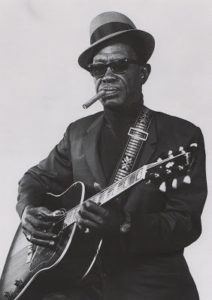 On this day in 1982, country blues singer, songwriter, guitarist, and musician Lightnin’ Hopkins died of esophageal cancer in Houston, at the age of 69. Born Samuel John Hopkins on March 15, 1912 in Centerville, Texas. He made his debut at Carnegie Hall on October 14, 1960, alongside Joan Baez and Pete Seeger, performing the spiritual “Mary Don’t You Weep”. In 1960, he signed with Tradition Records. The recordings which followed included his song “Mojo Hand” in 1960.
On this day in 1982, country blues singer, songwriter, guitarist, and musician Lightnin’ Hopkins died of esophageal cancer in Houston, at the age of 69. Born Samuel John Hopkins on March 15, 1912 in Centerville, Texas. He made his debut at Carnegie Hall on October 14, 1960, alongside Joan Baez and Pete Seeger, performing the spiritual “Mary Don’t You Weep”. In 1960, he signed with Tradition Records. The recordings which followed included his song “Mojo Hand” in 1960.
In 1968, Hopkins recorded the album Free Form Patterns, backed by the rhythm section of the psychedelic rock band 13th Floor Elevators. Through the 1960s and into the 1970s, he released one or sometimes two albums a year and toured, playing at major folk music festivals and at folk clubs and on college campuses in the U.S. and internationally. He toured extensively in the United States and played a six-city tour of Japan in 1978. Hopkins was Houston’s poet-in-residence for 35 years.
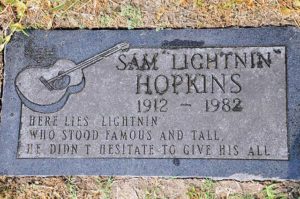 The Final Footprint
The Final Footprint
Lightnin’ is interred at Forest Park Lawndale Cemetery, Houston (a Dignity Memorial property) Garden of Gethsemane. His epitaph reads:
HERE LIES LIGHTNIN’
WHO STOOD FAMOUS AND TALL
HE DIDN’T HESITATE TO GIVE HIS ALL
 On this day in 2006, author, activist, civil rights leader, and the wife of Martin Luther King Jr., the “First Lady of the Civil Rights Movement” Coretta Scott King died of respiratory failure due to complications from ovarian cancer at a rehabilitation center in Rosarito Beach, Mexico, at the age of 78. Born on April 27, 1927 in Marion, Alabama. King met her husband while attending graduate school in Boston. They both became increasingly active in the American Civil Rights Movement. She was also a singer, and often incorporated music into her civil rights work.
On this day in 2006, author, activist, civil rights leader, and the wife of Martin Luther King Jr., the “First Lady of the Civil Rights Movement” Coretta Scott King died of respiratory failure due to complications from ovarian cancer at a rehabilitation center in Rosarito Beach, Mexico, at the age of 78. Born on April 27, 1927 in Marion, Alabama. King met her husband while attending graduate school in Boston. They both became increasingly active in the American Civil Rights Movement. She was also a singer, and often incorporated music into her civil rights work.
King played a prominent role in the years after her husband’s assassination in 1968 when she took on the leadership of the struggle for racial equality and became active in the Women’s Movement. King founded the King Center and sought to make his birthday a national holiday. She succeeded when Ronald Reagan signed legislation which established Martin Luther King, Jr. Day on November 2, 1983. She later broadened her scope to include both opposition to apartheid and advocacy for LGBT rights. King became friends with many politicians before and after Martin Luther King’s death, including John F. Kennedy, Lyndon B. Johnson, and Robert F. Kennedy. Her telephone conversation with John F. Kennedy during the 1960 presidential election has been credited by historians for mobilizing African-American voters.
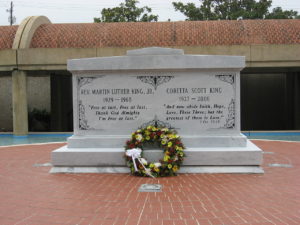 The Final Footprint
The Final Footprint
King’s eight-hour funeral at the New Birth Missionary Baptist Church in Lithonia, Georgia was held on February 7, 2006. Her daughter Bernice delivered her eulogy. U.S. Presidents George W. Bush, Bill Clinton, George H.W. Bush and Jimmy Carter attended. The Ford family was absent due to the illness of President Ford (who himself died later that year).
President Jimmy Carter and Rev. Joseph Lowery delivered funeral orations. King was temporarily laid in a mausoleum on the grounds of the King Center until a permanent place next to her husband’s remains could be built. She had expressed to family members and others that she wanted her remains to lie next to her husband’s at the King Center. On November 20, 2006, the new mausoleum containing the bodies of the Kings was unveiled in front of friends and family. The mausoleum is the third resting place of Martin Luther King and the second of Coretta Scott King.
Have you planned yours yet?
Follow TFF on twitter @RIPTFF

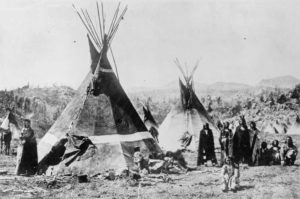 On this day in 1863, a detachment of California Volunteers engage the Shoshone at Bear River, Washington Territory, killing hundreds of men women and children. The site is located near the present-day city of Preston in Franklin County, Idaho. The death toll was large, but some Shoshone survived. Chief Sagwitch gathered survivors to keep his community alive. Sagwitch was shot twice in the hand and tried to escape on horseback, only to have the horse shot out from under him. He went to the ravine and escaped into the Bear River near a hot spring, where he floated under some brush until nightfall.
On this day in 1863, a detachment of California Volunteers engage the Shoshone at Bear River, Washington Territory, killing hundreds of men women and children. The site is located near the present-day city of Preston in Franklin County, Idaho. The death toll was large, but some Shoshone survived. Chief Sagwitch gathered survivors to keep his community alive. Sagwitch was shot twice in the hand and tried to escape on horseback, only to have the horse shot out from under him. He went to the ravine and escaped into the Bear River near a hot spring, where he floated under some brush until nightfall. Sagwitch’s son, Beshup Timbimboo, was shot seven times but survived and was rescued by family members. Other members of the band hid in the willow brush of the Bear River, or tried to act as if they were dead. After the officers concluded the battle was over, they returned with the soldiers to their temporary encampment near Franklin. Sagwitch and other survivors retrieved the wounded and built a fire to warm the survivors.
Sagwitch’s son, Beshup Timbimboo, was shot seven times but survived and was rescued by family members. Other members of the band hid in the willow brush of the Bear River, or tried to act as if they were dead. After the officers concluded the battle was over, they returned with the soldiers to their temporary encampment near Franklin. Sagwitch and other survivors retrieved the wounded and built a fire to warm the survivors.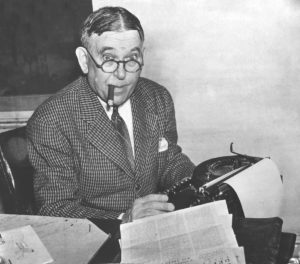

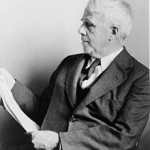 On this day in 1963 poet Robert Frost died in Boston from prostrate cancer surgery complications at the age of 88. Born Robert Lee Frost on 26 March 1874 in San Francisco. His work was initially published in England before it was published in America. He is highly regarded for his realistic depictions of rural life and his command of American colloquial speech. His work frequently employed settings from rural life in New England in the early twentieth century, using them to examine complex social and philosophical themes. In my opinion, he is one of the most popular and critically respected American poets of the twentieth century. Frost was honored frequently during his lifetime, receiving four Pulitzer Prizes for Poetry and the Congressional Gold Medal in 1960 for his poetical works. My favorite Frost poems include; “The Witch of Coös,” “Home Burial,” “A Servant to Servants,” “Directive,” “Neither Out Too Far Nor In Too Deep,” “Provide, Provide,” “Acquainted with the Night,” “After Apple Picking,” “Mending Wall,” “The Most of It,” “An Old Man’s Winter Night,” “To Earthward,” “Stopping by the Woods on a Snowy Evening,” “Spring Pools,” “The Lovely Shall Be Choosers,” “Design,” and “Desert Places.”
On this day in 1963 poet Robert Frost died in Boston from prostrate cancer surgery complications at the age of 88. Born Robert Lee Frost on 26 March 1874 in San Francisco. His work was initially published in England before it was published in America. He is highly regarded for his realistic depictions of rural life and his command of American colloquial speech. His work frequently employed settings from rural life in New England in the early twentieth century, using them to examine complex social and philosophical themes. In my opinion, he is one of the most popular and critically respected American poets of the twentieth century. Frost was honored frequently during his lifetime, receiving four Pulitzer Prizes for Poetry and the Congressional Gold Medal in 1960 for his poetical works. My favorite Frost poems include; “The Witch of Coös,” “Home Burial,” “A Servant to Servants,” “Directive,” “Neither Out Too Far Nor In Too Deep,” “Provide, Provide,” “Acquainted with the Night,” “After Apple Picking,” “Mending Wall,” “The Most of It,” “An Old Man’s Winter Night,” “To Earthward,” “Stopping by the Woods on a Snowy Evening,” “Spring Pools,” “The Lovely Shall Be Choosers,” “Design,” and “Desert Places.” 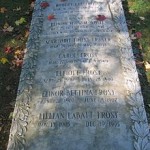
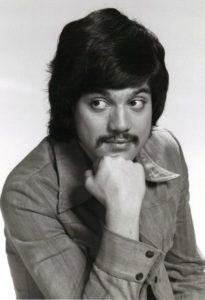 On this day in 1977, stand-up comedian and actor Freddie Prinze died from a gunshot wound to his head at UCLA Medical Center in Los Angeles at the age of 22. Born Frederick Karl Pruetzel on June 22, 1954 in New York City. Prinze was the star of NBC-TV sitcom Chico and the Man from 1974 until his death in 1977.
On this day in 1977, stand-up comedian and actor Freddie Prinze died from a gunshot wound to his head at UCLA Medical Center in Los Angeles at the age of 22. Born Frederick Karl Pruetzel on June 22, 1954 in New York City. Prinze was the star of NBC-TV sitcom Chico and the Man from 1974 until his death in 1977.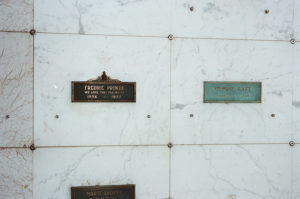 The Final Footprint
The Final Footprint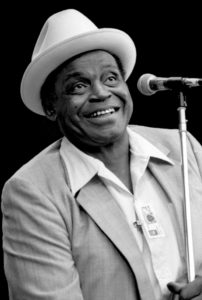
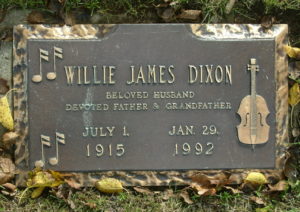 The Final Footprint
The Final Footprint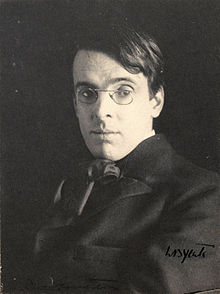
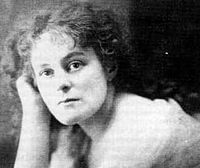 In 1889, Yeats met Maud Gonne, then a 23-year-old English heiress and ardent Irish Nationalist. Gonne was eighteen months younger than Yeats and later claimed she met the poet as a “paint-stained art student.”. Gonne had admired Yeat’s poem “The Isle of Statues” and sought out his acquaintance. Yeats apparently developed an obsessive infatuation with her beauty and outspoken manner, and she had a significant and lasting effect on his poetry and his life thereafter.
In 1889, Yeats met Maud Gonne, then a 23-year-old English heiress and ardent Irish Nationalist. Gonne was eighteen months younger than Yeats and later claimed she met the poet as a “paint-stained art student.”. Gonne had admired Yeat’s poem “The Isle of Statues” and sought out his acquaintance. Yeats apparently developed an obsessive infatuation with her beauty and outspoken manner, and she had a significant and lasting effect on his poetry and his life thereafter.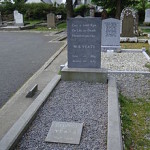 he Final Footprint – Yeats was buried after a discreet and private funeral at Roquebrune-Cap-Martin. He and George had often discussed his death, and his express wish was that he be buried quickly in France with a minimum of fuss. According to George, “His actual words were ‘If I die bury me up there [at Roquebrune] and then in a year’s time when the newspapers have forgotten me, dig me up and plant me in Sligo’.” In September 1948, Yeats’ body was moved to Drumcliff, County Sligo, on the Irish Naval Service corvette LÉ Macha. The person in charge of this operation for the Irish Government was Sean MacBride, Maud’s son, and then Minister of External Affairs. His epitaph is taken from the last lines of “Under Ben Bulben”, one of his final poems:
he Final Footprint – Yeats was buried after a discreet and private funeral at Roquebrune-Cap-Martin. He and George had often discussed his death, and his express wish was that he be buried quickly in France with a minimum of fuss. According to George, “His actual words were ‘If I die bury me up there [at Roquebrune] and then in a year’s time when the newspapers have forgotten me, dig me up and plant me in Sligo’.” In September 1948, Yeats’ body was moved to Drumcliff, County Sligo, on the Irish Naval Service corvette LÉ Macha. The person in charge of this operation for the Irish Government was Sean MacBride, Maud’s son, and then Minister of External Affairs. His epitaph is taken from the last lines of “Under Ben Bulben”, one of his final poems: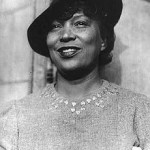 On this day in 1960, folklorist, anthropologist, and author Zora Neale Hurston died at St. Lucie County Welfare Home in St. Lucie, Florida of hypertensive heart disease at the age of 69. Born in Notasulga, Alabama, on 7 January 1891. Of Hurston’s four novels and more than 50 published short stories, plays, and essays, she is perhaps best known for her 1937 novel Their Eyes Were Watching God. Hurston’s work slid into obscurity for decades, for a number of cultural and political reasons. During the 1930s and 1940s when her work was published, the pre-eminent African-American author was Richard Wright. Unlike Hurston, Wright wrote in explicitly political terms using the struggle of African Americans for respect and economic advancement as both the setting and the motivation for his work. Other popular African-American authors of the time, such as Ralph Ellison, dealt with the same concerns as Wright. Hurston’s work, which did not engage these political issues, therefore did not fit in with this struggle. In 1951, for example, Hurston argued that New Deal economic support created a harmful dependency by African Americans on the government, and that this dependency ceded too much power to politicians. In addition, some critics objected to the representation of African-American dialect in Hurston’s novels, given the racially charged history of dialect fiction in American literature. Her stylistic choices in terms of dialogue were influenced by her academic experiences. Thinking like a folklorist, Hurston strove to represent speech patterns of the period which she documented through ethnographic research. For example, a character in Jonah’s Gourd Vine expresses herself in this manner:
On this day in 1960, folklorist, anthropologist, and author Zora Neale Hurston died at St. Lucie County Welfare Home in St. Lucie, Florida of hypertensive heart disease at the age of 69. Born in Notasulga, Alabama, on 7 January 1891. Of Hurston’s four novels and more than 50 published short stories, plays, and essays, she is perhaps best known for her 1937 novel Their Eyes Were Watching God. Hurston’s work slid into obscurity for decades, for a number of cultural and political reasons. During the 1930s and 1940s when her work was published, the pre-eminent African-American author was Richard Wright. Unlike Hurston, Wright wrote in explicitly political terms using the struggle of African Americans for respect and economic advancement as both the setting and the motivation for his work. Other popular African-American authors of the time, such as Ralph Ellison, dealt with the same concerns as Wright. Hurston’s work, which did not engage these political issues, therefore did not fit in with this struggle. In 1951, for example, Hurston argued that New Deal economic support created a harmful dependency by African Americans on the government, and that this dependency ceded too much power to politicians. In addition, some critics objected to the representation of African-American dialect in Hurston’s novels, given the racially charged history of dialect fiction in American literature. Her stylistic choices in terms of dialogue were influenced by her academic experiences. Thinking like a folklorist, Hurston strove to represent speech patterns of the period which she documented through ethnographic research. For example, a character in Jonah’s Gourd Vine expresses herself in this manner: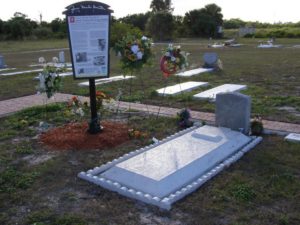
 On this day in 1986, the Space Shuttle Challenger broke apart 73 seconds into its flight leading to the deaths of all seven crew members;
On this day in 1986, the Space Shuttle Challenger broke apart 73 seconds into its flight leading to the deaths of all seven crew members;  Michael J. Smith, Dick Scobee, Ronald McNair, Ellison Onizuka, Christa McAuliffe, Gregory Jarvis, Judith Resnick. That night, President Ronald Reagan had been scheduled to give his annual State of the Union address. He initially announced that the address would go on as scheduled, but then postponed the State of the Union address and instead gave a national address on the Challenger disaster from the Oval Office of the White House. It was written by Peggy Noonan, and finished with the following statement, which quoted from the poem “High Flight” by John Gillespie Magee, Jr.:
Michael J. Smith, Dick Scobee, Ronald McNair, Ellison Onizuka, Christa McAuliffe, Gregory Jarvis, Judith Resnick. That night, President Ronald Reagan had been scheduled to give his annual State of the Union address. He initially announced that the address would go on as scheduled, but then postponed the State of the Union address and instead gave a national address on the Challenger disaster from the Oval Office of the White House. It was written by Peggy Noonan, and finished with the following statement, which quoted from the poem “High Flight” by John Gillespie Magee, Jr.:
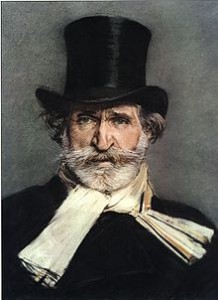
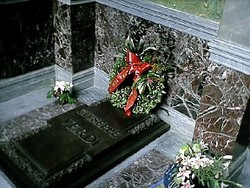
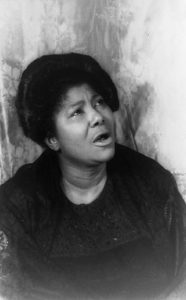 On this day in 1972 gospel singer, Civil Rights activist, The Queen of Gospel, Mahalia Jackson died at Little Company of Mary Hospital in Evergreen Park, Illinois, of heart failure and diabetes complications, at the age of 60. Born on October 26, 1911 in New Orleans. Possessing a powerful contralto voice, she became one of the most influential gospel singers in the world. She was described by entertainer Harry Belafonte as “the single most powerful black woman in the United States”. She recorded about 30 albums (mostly for Columbia Records) during her career.
On this day in 1972 gospel singer, Civil Rights activist, The Queen of Gospel, Mahalia Jackson died at Little Company of Mary Hospital in Evergreen Park, Illinois, of heart failure and diabetes complications, at the age of 60. Born on October 26, 1911 in New Orleans. Possessing a powerful contralto voice, she became one of the most influential gospel singers in the world. She was described by entertainer Harry Belafonte as “the single most powerful black woman in the United States”. She recorded about 30 albums (mostly for Columbia Records) during her career.

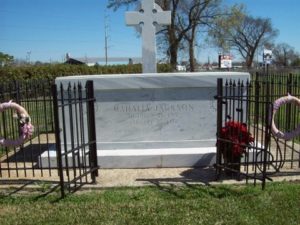 The Final Footprint
The Final Footprint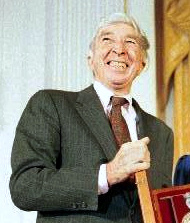
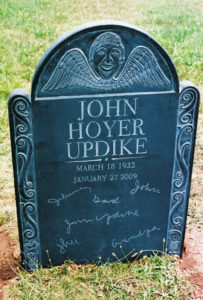 The Final Footprint
The Final Footprint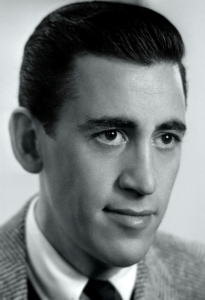 On this day in 2010, writer J. D. Salinger died in Cornish, New Hampshire at the age of 91. Born Jerome David Salinger in Manhattan on January 1, 1919. Perhaps best known for his widely-read novel The Catcher in the Rye. Following his early success publishing short stories and The Catcher in the Rye, Salinger led a very private life for more than a half-century. He published his final original work in 1965 and gave his last interview in 1980.
On this day in 2010, writer J. D. Salinger died in Cornish, New Hampshire at the age of 91. Born Jerome David Salinger in Manhattan on January 1, 1919. Perhaps best known for his widely-read novel The Catcher in the Rye. Following his early success publishing short stories and The Catcher in the Rye, Salinger led a very private life for more than a half-century. He published his final original work in 1965 and gave his last interview in 1980.
 On this day in 2014 singer, songwriter and social activist Pete Seeger died
On this day in 2014 singer, songwriter and social activist Pete Seeger died 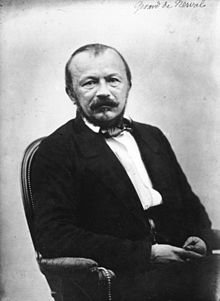 On this day in 1855, French writer, poet, essayist and translator Gérard de Nerval died by hanging himself from a sewer grating in the Rue de la vieille-lanterne, a narrow lane in the fourth arrondissement of Paris, at the age of 46. Born Gérard Labrunie in Paris on 22 May 1808. He was a major figure of French romanticism who worked in many genres. He is best known for his poems and novellas, especially the collection Les Filles du feu (The Daughters of Fire), which includes the novella Sylvie and the poem El Desdichado.
On this day in 1855, French writer, poet, essayist and translator Gérard de Nerval died by hanging himself from a sewer grating in the Rue de la vieille-lanterne, a narrow lane in the fourth arrondissement of Paris, at the age of 46. Born Gérard Labrunie in Paris on 22 May 1808. He was a major figure of French romanticism who worked in many genres. He is best known for his poems and novellas, especially the collection Les Filles du feu (The Daughters of Fire), which includes the novella Sylvie and the poem El Desdichado.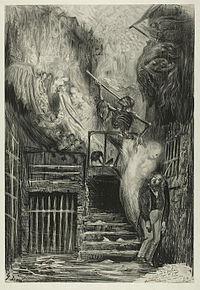
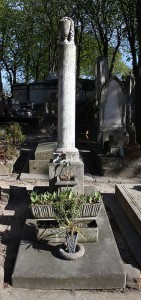
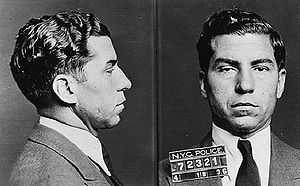 On this day in 1962, Sicilian mobster, Charlie “Lucky” Luciano, died from a heart attack in the Naples International Airport in Naples, Italy at the age of 64. Born Salvatore Lucania on 24 November 1897 in Lercara Friddi, Palermo, Sicily. Luciano is considered the father of modern organized crime in America. He was instrumental in creating the five Mafia crime families in New York City and in establishing the first commission. Luciano was the first official boss of the modern Genovese crime family. He and his associate Meyer Lansky, were instrumental in the development of the “National Crime Syndicate” in the United States. On 17 January 1919, the Eighteenth Amendment to the U.S. Constitution was ratified. The Amendment prohibited the manufacture, sale and transportation of alcoholic beverages. Prohibition remained in force until its repeal in 1933 and reduced the consumption of alcohol but had the unintended effect of stimulating the proliferation of rampant underground, organized and widespread criminal activity. Organized crime gained a new source of revenue through illegal alcohol sales. In the 1920’s, New York’s two leading mobsters were Joe “The Boss” Masseria and Salvatore Maranzano. They were engaged in what would be known as the infamous Castellammarese War. Luciano worked his way up to be Masseria’s top aide, but Luciano made a deal with Maranzano whereby Luciano would set up the death of Masseria in return for Maranzano’s support of Luciano becoming the head of the Masseria family and thus ending the destructive war. Masseria was assassinated in a Coney Island restaurant by Bugsy Siegel, Vito Genovese, and Joe Adonis. Maranzano then declared Luciano his number two man, and set up the Five Families of New York (Genovese, Gambino, Lucchese, Colombo, and Bonanno) under him, promising that they would all be equal and all be free to make money. However, Maranzano declare
On this day in 1962, Sicilian mobster, Charlie “Lucky” Luciano, died from a heart attack in the Naples International Airport in Naples, Italy at the age of 64. Born Salvatore Lucania on 24 November 1897 in Lercara Friddi, Palermo, Sicily. Luciano is considered the father of modern organized crime in America. He was instrumental in creating the five Mafia crime families in New York City and in establishing the first commission. Luciano was the first official boss of the modern Genovese crime family. He and his associate Meyer Lansky, were instrumental in the development of the “National Crime Syndicate” in the United States. On 17 January 1919, the Eighteenth Amendment to the U.S. Constitution was ratified. The Amendment prohibited the manufacture, sale and transportation of alcoholic beverages. Prohibition remained in force until its repeal in 1933 and reduced the consumption of alcohol but had the unintended effect of stimulating the proliferation of rampant underground, organized and widespread criminal activity. Organized crime gained a new source of revenue through illegal alcohol sales. In the 1920’s, New York’s two leading mobsters were Joe “The Boss” Masseria and Salvatore Maranzano. They were engaged in what would be known as the infamous Castellammarese War. Luciano worked his way up to be Masseria’s top aide, but Luciano made a deal with Maranzano whereby Luciano would set up the death of Masseria in return for Maranzano’s support of Luciano becoming the head of the Masseria family and thus ending the destructive war. Masseria was assassinated in a Coney Island restaurant by Bugsy Siegel, Vito Genovese, and Joe Adonis. Maranzano then declared Luciano his number two man, and set up the Five Families of New York (Genovese, Gambino, Lucchese, Colombo, and Bonanno) under him, promising that they would all be equal and all be free to make money. However, Maranzano declare d himself capo di tutti capi (Boss of all Bosses), which meant every Don in the country had to pay up to him. Luciano began planning to eliminate Maranzano. Luciano became the most powerful mobster in the country when Maranzano was killed in his office. Luciano set up The Commission comprised of the heads of the Five Familes plus; the Philadelphia crime family, the Buffalo crime family, Los Angeles crime family and the Chicago Outfit of Al Capone; later, the Detroit crime family, and Kansas City crime family. Genovese became Luciano’s Underboss, while Frank Costello was his consigliere. Michael “Trigger Mike” Coppola, Anthony Strollo, Adonis, and Anthony Carfano all served as caporegimes. Lansky and Siegel were both unofficial advisors. I suppose he was lucky in that he died from a heart attack as opposed to being murdered.
d himself capo di tutti capi (Boss of all Bosses), which meant every Don in the country had to pay up to him. Luciano began planning to eliminate Maranzano. Luciano became the most powerful mobster in the country when Maranzano was killed in his office. Luciano set up The Commission comprised of the heads of the Five Familes plus; the Philadelphia crime family, the Buffalo crime family, Los Angeles crime family and the Chicago Outfit of Al Capone; later, the Detroit crime family, and Kansas City crime family. Genovese became Luciano’s Underboss, while Frank Costello was his consigliere. Michael “Trigger Mike” Coppola, Anthony Strollo, Adonis, and Anthony Carfano all served as caporegimes. Lansky and Siegel were both unofficial advisors. I suppose he was lucky in that he died from a heart attack as opposed to being murdered. The Final Footprint – Luciano is entombed in the Lucania Family Private Mausoleum in Saint John Cemetery, Middle Village, New York. The inscription on his crypt plate reads: IL NOSTRO CARO FRATELLO (our dear brother) SALVATORE LUCANIA and shows his birth and death dates.
The Final Footprint – Luciano is entombed in the Lucania Family Private Mausoleum in Saint John Cemetery, Middle Village, New York. The inscription on his crypt plate reads: IL NOSTRO CARO FRATELLO (our dear brother) SALVATORE LUCANIA and shows his birth and death dates.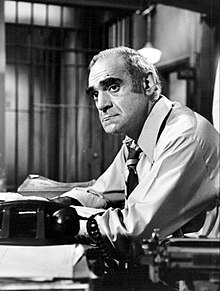

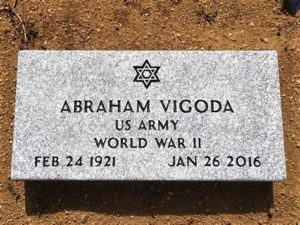
 On this day in 2020, 5x NBA Champion, Black Mamba, Kobe Bryant died along with his
On this day in 2020, 5x NBA Champion, Black Mamba, Kobe Bryant died along with his 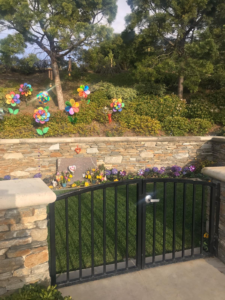 The Final Footprint
The Final Footprint On this day in 1990, Oscar nominated actess, Ava Gardner, died from pneumonia, in her London home at the age of 67. Born Ava Lavinia Gardner on 24 December 1922 in Grabtown, North Carolina. Her Academy Award for Best Actress nomination was for her work in Mogambo (1953). Gardner appeared in several high-profile films from the 1950s to 1970s, including; Show Boat (1951), The Snows of Kilimanjaro (1952), The Barefoot Contessa (1954), The Sun Also Rises (1957), On the Beach (1959), The Night of the Iguana (1964), Earthquake (1974), and The Cassandra Crossing (1976). She was married three times; Mickey Rooney (1942 – 1943 divorce), Artie Shaw (1945 – 1946 divorce) and Frank Sinatra (1951 – 1957 divorce). Gardner would later say in her autobiography that of all the men she had had, Sinatra was the love of her life. Sinatra left his wife, Nancy, for Ava and their subsequent marriage made headlines and Sinatra was savaged by gossip columnists, the Hollywood establishment, the Roman Catholic Church, and by his fans. Sinatra’s career was suffering while hers was prospering. Reportedly, Gardner used her considerable clout to get Sinatra cast in his Oscar-winning role in From Here to Eternity (1953). That role and the award revitalized both Sinatra’s acting and singing careers. They reportedly remained friends after the divorce. Gardner had other famous friendships; Howard Hughes and Ernest Hemingway.
On this day in 1990, Oscar nominated actess, Ava Gardner, died from pneumonia, in her London home at the age of 67. Born Ava Lavinia Gardner on 24 December 1922 in Grabtown, North Carolina. Her Academy Award for Best Actress nomination was for her work in Mogambo (1953). Gardner appeared in several high-profile films from the 1950s to 1970s, including; Show Boat (1951), The Snows of Kilimanjaro (1952), The Barefoot Contessa (1954), The Sun Also Rises (1957), On the Beach (1959), The Night of the Iguana (1964), Earthquake (1974), and The Cassandra Crossing (1976). She was married three times; Mickey Rooney (1942 – 1943 divorce), Artie Shaw (1945 – 1946 divorce) and Frank Sinatra (1951 – 1957 divorce). Gardner would later say in her autobiography that of all the men she had had, Sinatra was the love of her life. Sinatra left his wife, Nancy, for Ava and their subsequent marriage made headlines and Sinatra was savaged by gossip columnists, the Hollywood establishment, the Roman Catholic Church, and by his fans. Sinatra’s career was suffering while hers was prospering. Reportedly, Gardner used her considerable clout to get Sinatra cast in his Oscar-winning role in From Here to Eternity (1953). That role and the award revitalized both Sinatra’s acting and singing careers. They reportedly remained friends after the divorce. Gardner had other famous friendships; Howard Hughes and Ernest Hemingway.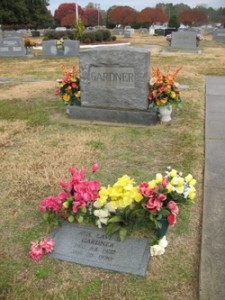





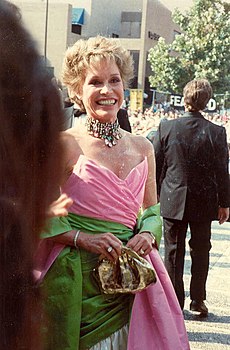
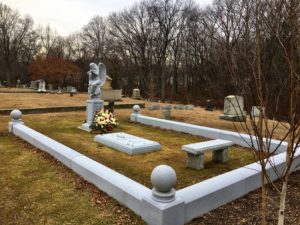 The Final Footprint
The Final Footprint 
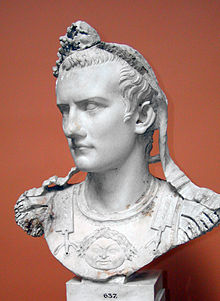 On this day in 41 AD, Roman Emperor Caligula was assassinated, the result of a conspiracy by officers of the Praetorian Guard, senators, and courtiers, in the cryptoporticus (underground corridor) beneath the imperial palaces on the Palatine Hill, at the age of 28. Born Gaius Julius Caesar Augustus Germanicus in Antium (modern Anzio and Nettuno) on 31 August 12 AD. Caligula was a member of the house of rulers conventionally known as the Julio-Claudian dynasty. Caligula’s father Germanicus, the nephew and adopted son of Emperor Tiberius, was a very successful general and one of Rome’s most beloved public figures. The young Gaius earned the nickname Caligula (meaning “little soldier’s boot”, the diminutive form of caliga, hob-nailed military boot) from his father’s soldiers while accompanying him during his campaigns in Germania. When Germanicus died at Antioch in AD 19, his wife Agrippina the Elder returned to Rome with her six children where she became entangled in a bitter feud with Tiberius. The conflict eventually led to the destruction of her family, with Caligula as the sole male survivor. Untouched by the deadly intrigues, Caligula accepted the invitation to join the emperor on the island of Capri in AD 31, to where Tiberius, himself, had withdrawn five years earlier. With the death of Tiberius in AD 37, Caligula succeeded his great uncle and adoptive grandfather as Emperor. There are few surviving sources about the reign of Emperor Caligula, although he is described as a noble and moderate ruler during the first six months of his reign. After this, the sources focus upon his cruelty, sadism, extravagance, and sexual perversity, presenting him as an insane tyrant. While the reliability of these sources is questionable, it is known that during his brief reign, Caligula worked to increase the unconstrained personal power of the emperor, as opposed to countervailing powers within the principate. He directed much of his attention to ambitious construction projects and luxurious dwellings for himself; he initiated the construction of two aqueducts in Rome: the Aqua Claudia and the Anio Novus. During his reign, the Empire annexed the Kingdom of Mauretania as a province.
On this day in 41 AD, Roman Emperor Caligula was assassinated, the result of a conspiracy by officers of the Praetorian Guard, senators, and courtiers, in the cryptoporticus (underground corridor) beneath the imperial palaces on the Palatine Hill, at the age of 28. Born Gaius Julius Caesar Augustus Germanicus in Antium (modern Anzio and Nettuno) on 31 August 12 AD. Caligula was a member of the house of rulers conventionally known as the Julio-Claudian dynasty. Caligula’s father Germanicus, the nephew and adopted son of Emperor Tiberius, was a very successful general and one of Rome’s most beloved public figures. The young Gaius earned the nickname Caligula (meaning “little soldier’s boot”, the diminutive form of caliga, hob-nailed military boot) from his father’s soldiers while accompanying him during his campaigns in Germania. When Germanicus died at Antioch in AD 19, his wife Agrippina the Elder returned to Rome with her six children where she became entangled in a bitter feud with Tiberius. The conflict eventually led to the destruction of her family, with Caligula as the sole male survivor. Untouched by the deadly intrigues, Caligula accepted the invitation to join the emperor on the island of Capri in AD 31, to where Tiberius, himself, had withdrawn five years earlier. With the death of Tiberius in AD 37, Caligula succeeded his great uncle and adoptive grandfather as Emperor. There are few surviving sources about the reign of Emperor Caligula, although he is described as a noble and moderate ruler during the first six months of his reign. After this, the sources focus upon his cruelty, sadism, extravagance, and sexual perversity, presenting him as an insane tyrant. While the reliability of these sources is questionable, it is known that during his brief reign, Caligula worked to increase the unconstrained personal power of the emperor, as opposed to countervailing powers within the principate. He directed much of his attention to ambitious construction projects and luxurious dwellings for himself; he initiated the construction of two aqueducts in Rome: the Aqua Claudia and the Anio Novus. During his reign, the Empire annexed the Kingdom of Mauretania as a province. 
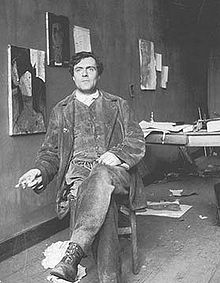 On this day in 1920, painter and sculptor Amedeo Modigliani died of tubercular meningitis at the Hôpital de la Charité in Paris at the age of 35. Born Amadeo Clemente Modigliani on 12 July 1884 in Livorno, Italy. Modigliani worked mainly in France and is known for portraits and nudes in a modern style characterized by elongation of faces and figures, that were not received well during his lifetime, but later found acceptance. Modigliani spent his youth in Italy, where he studied the art of antiquity and the Renaissance, until he moved to Paris in 1906.
On this day in 1920, painter and sculptor Amedeo Modigliani died of tubercular meningitis at the Hôpital de la Charité in Paris at the age of 35. Born Amadeo Clemente Modigliani on 12 July 1884 in Livorno, Italy. Modigliani worked mainly in France and is known for portraits and nudes in a modern style characterized by elongation of faces and figures, that were not received well during his lifetime, but later found acceptance. Modigliani spent his youth in Italy, where he studied the art of antiquity and the Renaissance, until he moved to Paris in 1906. 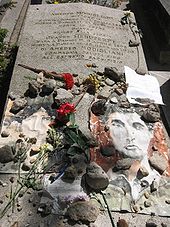
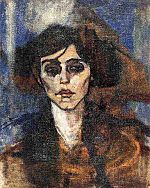








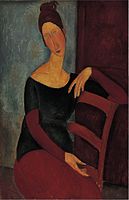

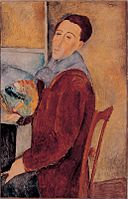




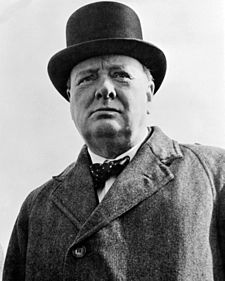 On this day in 1965, British Army veteran, politician, statesman, author, historian, The Right Honourable Sir Winston Churchill, Knight of the Garter, Order of Merit, Companion of Honour, Territorial Decoration, Her Majesty’s Most Honourable Privy Council, Deputy Lieutenant, Fellow of the Royal Society, died at his home in Hyde Park, London, England at the age of 90. Born Winston Leonard Spencer-Churchill on 30 November 1874 in Blenheim Palace, Woodstock, Oxfordshire, England into the Spencer family a British noble family descended in the male line from Henry Spencer (died c. 1478), male-line ancestor of the Earls of Sunderland, the later Dukes of Marlborough, and the Earls Spencer. Churchill was a grandson of the 7th Duke of Marlborough. Diana, Princess of Wales was a member of the Spencer family as a daughter of the 8th Earl Spencer. As of this date, he is the only British prime minister to have received the Nobel Prize in Literature and he was the first person to be made an honorary citizen of the United States. Beginning in 1932, Churchill took the lead in warning about the danger of German rearmament. On the outbreak of WWII, he was again appointed First Lord of the Admiralty. Following the resignation of Neville Chamberlain on 10 May 1940, Churchill became Prime Minister of the United Kingdom. His steadfast refusal to consider defeat, surrender or a compromise peace, helped inspire British resistance, especially during the difficult early days of the War when Britain stood alone in its active opposition to Hitler. Churchill was particularly noted for his speeches and radio broadcasts, which helped inspire the British people and the embattled Allied forces. His first speech as prime minister was the famous “I have nothing to offer but blood, toil, tears, and sweat”. Two other equally famous quotes were given just before the Battle of Britain. One included the words:
On this day in 1965, British Army veteran, politician, statesman, author, historian, The Right Honourable Sir Winston Churchill, Knight of the Garter, Order of Merit, Companion of Honour, Territorial Decoration, Her Majesty’s Most Honourable Privy Council, Deputy Lieutenant, Fellow of the Royal Society, died at his home in Hyde Park, London, England at the age of 90. Born Winston Leonard Spencer-Churchill on 30 November 1874 in Blenheim Palace, Woodstock, Oxfordshire, England into the Spencer family a British noble family descended in the male line from Henry Spencer (died c. 1478), male-line ancestor of the Earls of Sunderland, the later Dukes of Marlborough, and the Earls Spencer. Churchill was a grandson of the 7th Duke of Marlborough. Diana, Princess of Wales was a member of the Spencer family as a daughter of the 8th Earl Spencer. As of this date, he is the only British prime minister to have received the Nobel Prize in Literature and he was the first person to be made an honorary citizen of the United States. Beginning in 1932, Churchill took the lead in warning about the danger of German rearmament. On the outbreak of WWII, he was again appointed First Lord of the Admiralty. Following the resignation of Neville Chamberlain on 10 May 1940, Churchill became Prime Minister of the United Kingdom. His steadfast refusal to consider defeat, surrender or a compromise peace, helped inspire British resistance, especially during the difficult early days of the War when Britain stood alone in its active opposition to Hitler. Churchill was particularly noted for his speeches and radio broadcasts, which helped inspire the British people and the embattled Allied forces. His first speech as prime minister was the famous “I have nothing to offer but blood, toil, tears, and sweat”. Two other equally famous quotes were given just before the Battle of Britain. One included the words: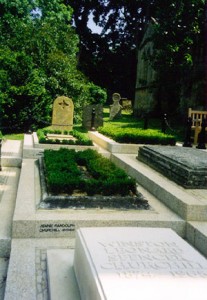
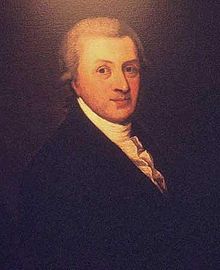 On this day in 1803, Irish brewer, entrepreneur, philanthropist and the founder of the Guinness brewery business, Arthur Guinness died in Dublin at the approximate age of 78. Born into the Irish Protestant Guinness family in 1724 or 1725 in
On this day in 1803, Irish brewer, entrepreneur, philanthropist and the founder of the Guinness brewery business, Arthur Guinness died in Dublin at the approximate age of 78. Born into the Irish Protestant Guinness family in 1724 or 1725 in 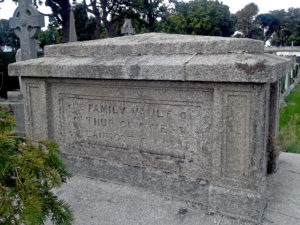
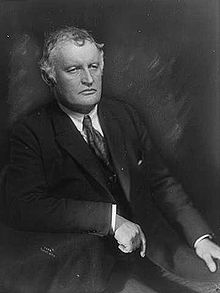 On this day in 1944, painter Edvard Munch died in his house at Ekely near Oslo, about a month after his 80th birthday. Born in a farmhouse in the village of Ådalsbruk in Løten on 12 December 1863. Munch’s intensely evocative treatment of psychological themes built upon some of the main tenets of late 19th-century Symbolism and greatly influenced German Expressionism in the early 20th century. Perhaps best known for The Scream (1893).
On this day in 1944, painter Edvard Munch died in his house at Ekely near Oslo, about a month after his 80th birthday. Born in a farmhouse in the village of Ådalsbruk in Løten on 12 December 1863. Munch’s intensely evocative treatment of psychological themes built upon some of the main tenets of late 19th-century Symbolism and greatly influenced German Expressionism in the early 20th century. Perhaps best known for The Scream (1893). 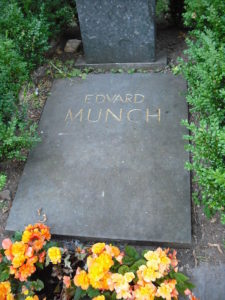









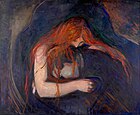



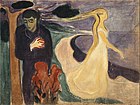

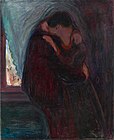







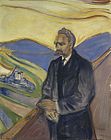












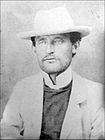


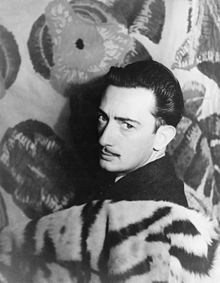 On this day in 1989 prominent Spanish Catalan surrealist painter, Salvador Dali died while his favorite record of Tristan and Isolde played, of heart failure at Figueres, Spain at the age of 84. Born Salvador Domingo Felipe Jacinto Dalí i Domènech on 11 May 1904, in the town of Figueres, in the Empordà region, close to the French border in Catalonia. Dalí was a skilled draftsman, perhaps best known for the striking and bizarre images in his surrealist work. His painterly skills are often attributed to the influence of Renaissance masters. Perhaps his best-known work, The Persistence of Memory, was completed in August 1931. Dalí’s expansive artistic repertoire included film, sculpture, and photography, in collaboration with a range of artists in a variety of media. Dalí attributed his “love of everything that is gilded and excessive, my passion for luxury and my love of oriental clothes” to an “Arab lineage”, claiming that his ancestors were descended from the Moors. Dalí was highly imaginative, and also enjoyed indulging in unusual and grandiose behavior. Dalí married Elena Ivanovna Diakonova “Gala”.
On this day in 1989 prominent Spanish Catalan surrealist painter, Salvador Dali died while his favorite record of Tristan and Isolde played, of heart failure at Figueres, Spain at the age of 84. Born Salvador Domingo Felipe Jacinto Dalí i Domènech on 11 May 1904, in the town of Figueres, in the Empordà region, close to the French border in Catalonia. Dalí was a skilled draftsman, perhaps best known for the striking and bizarre images in his surrealist work. His painterly skills are often attributed to the influence of Renaissance masters. Perhaps his best-known work, The Persistence of Memory, was completed in August 1931. Dalí’s expansive artistic repertoire included film, sculpture, and photography, in collaboration with a range of artists in a variety of media. Dalí attributed his “love of everything that is gilded and excessive, my passion for luxury and my love of oriental clothes” to an “Arab lineage”, claiming that his ancestors were descended from the Moors. Dalí was highly imaginative, and also enjoyed indulging in unusual and grandiose behavior. Dalí married Elena Ivanovna Diakonova “Gala”.
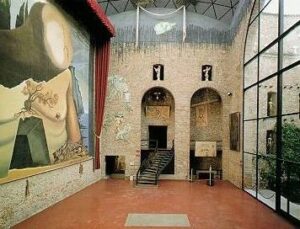






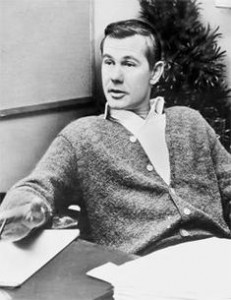 On this day in 2005, U.S. Navy veteran, television host, comedian, Emmy winner, American icon, Johnny Carson, died at Cedars-Sinai Medical Center of respiratory failure arising from emphysema, in Los Angeles, California at the age of 79. Born John William Carson on 23 October 1925 in Corning, Iowa. NBC invited him to replace Jack Paar as host of The Tonight Show, who would leave in March 1962. Carson declined the offer, but NBC asked him again after Bob Newhart, Jackie Gleason, and Joey Bishop also refused. Carson accepted in March and on 1 October 1962, The Tonight Show Starring Johnny Carson premiered. His announcer and sidekick was Ed McMahon throughout the program. McMahon’s opening line, “Heeeere’s Johnny” became a hallmark. Carson’s trademark was a phantom golf swing at the end of his monologues, aimed stage left where Doc Severinsen and the Tonight Show Band were located. Paul Anka wrote the theme song (“Johnny’s Theme”), a reworking of his “Toot Sweet”. In May 1972, the show moved from New York to Burbank, California. Carson often joked about “beautiful downtown Burbank”. Carson played several continuing characters on sketches during the show, including; Art Fern the “Tea Time Movie” announcer, Carnac the Magnificent and Floyd R. Turbo American. Carson retired from show business on 22 May 1992, when he stepped down as host of The Tonight Show. His farewell was a major media event, and stretched over several nights. It was often emotional for Carson, his colleagues, and the audiences, particularly the farewell statement he delivered on his 4,531st and final Tonight Show:
On this day in 2005, U.S. Navy veteran, television host, comedian, Emmy winner, American icon, Johnny Carson, died at Cedars-Sinai Medical Center of respiratory failure arising from emphysema, in Los Angeles, California at the age of 79. Born John William Carson on 23 October 1925 in Corning, Iowa. NBC invited him to replace Jack Paar as host of The Tonight Show, who would leave in March 1962. Carson declined the offer, but NBC asked him again after Bob Newhart, Jackie Gleason, and Joey Bishop also refused. Carson accepted in March and on 1 October 1962, The Tonight Show Starring Johnny Carson premiered. His announcer and sidekick was Ed McMahon throughout the program. McMahon’s opening line, “Heeeere’s Johnny” became a hallmark. Carson’s trademark was a phantom golf swing at the end of his monologues, aimed stage left where Doc Severinsen and the Tonight Show Band were located. Paul Anka wrote the theme song (“Johnny’s Theme”), a reworking of his “Toot Sweet”. In May 1972, the show moved from New York to Burbank, California. Carson often joked about “beautiful downtown Burbank”. Carson played several continuing characters on sketches during the show, including; Art Fern the “Tea Time Movie” announcer, Carnac the Magnificent and Floyd R. Turbo American. Carson retired from show business on 22 May 1992, when he stepped down as host of The Tonight Show. His farewell was a major media event, and stretched over several nights. It was often emotional for Carson, his colleagues, and the audiences, particularly the farewell statement he delivered on his 4,531st and final Tonight Show: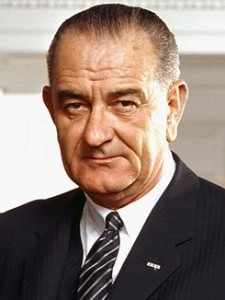 How ironic: Johnson and the Kennedys, inextricably linked in life. And linked in death.
How ironic: Johnson and the Kennedys, inextricably linked in life. And linked in death.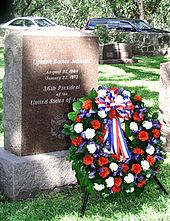
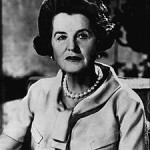 On this day in 1995, American philanthropist, the wife of Joseph P. Kennedy, and the mother of nine children, among them United States President John F. Kennedy, United States Senator Robert F. Kennedy, and United States Senator Edward Moore “Ted” Kennedy, Countess (title granted by Pope Pius XII), Rose Kennedy died from complications from pneumonia at the age of 104 in Hyannis, Massachusetts. Born Rose Elizabeth Fitzgerald on 22 July 1890 in the North End neighborhood of Boston.
On this day in 1995, American philanthropist, the wife of Joseph P. Kennedy, and the mother of nine children, among them United States President John F. Kennedy, United States Senator Robert F. Kennedy, and United States Senator Edward Moore “Ted” Kennedy, Countess (title granted by Pope Pius XII), Rose Kennedy died from complications from pneumonia at the age of 104 in Hyannis, Massachusetts. Born Rose Elizabeth Fitzgerald on 22 July 1890 in the North End neighborhood of Boston. 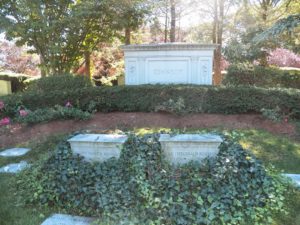



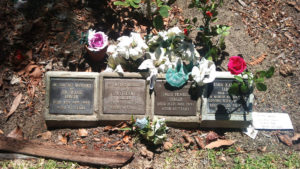 The Final Footprint
The Final Footprint

 On this day in 2010, actress and singer Jean Simmons died
On this day in 2010, actress and singer Jean Simmons died 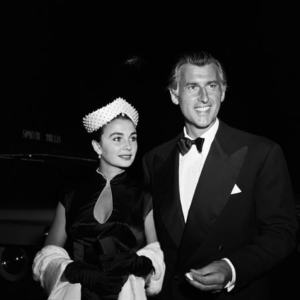 Simmons was married and divorced twice. She married Stewart Granger in Tucson, Arizona on 20 December 1950. In 1956, Granger and she became U.S. citizens. The couple divorced in 1960. On 1 November 1960, Simmons married director Richard Brooks. Simmons and Brooks divorced in 1980. Simmons moved to the East Coast of the US in the late 1970s, briefly owning a home in New Milford, Connecticut. Later, she returned to California, settling in Santa Monica, California, where she lived until her death.
Simmons was married and divorced twice. She married Stewart Granger in Tucson, Arizona on 20 December 1950. In 1956, Granger and she became U.S. citizens. The couple divorced in 1960. On 1 November 1960, Simmons married director Richard Brooks. Simmons and Brooks divorced in 1980. Simmons moved to the East Coast of the US in the late 1970s, briefly owning a home in New Milford, Connecticut. Later, she returned to California, settling in Santa Monica, California, where she lived until her death.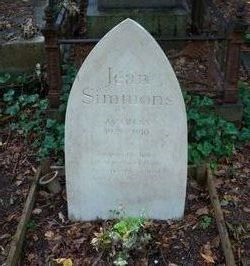 The Final Footprint
The Final Footprint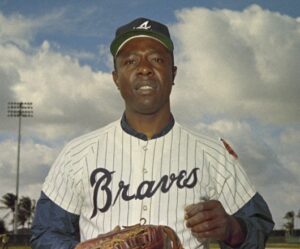 And on this day in 2021 “Hammer” or “Hammerin’ Hank“, professional baseball right fielder who played 23 seasons in Major League Baseball (MLB), from 1954 through 1976, Hank Aaron died in his sleep in his Atlanta residence at the age of 86. Born Henry Louis Aaron in Mobile, Alabama on 5 February 1934.
And on this day in 2021 “Hammer” or “Hammerin’ Hank“, professional baseball right fielder who played 23 seasons in Major League Baseball (MLB), from 1954 through 1976, Hank Aaron died in his sleep in his Atlanta residence at the age of 86. Born Henry Louis Aaron in Mobile, Alabama on 5 February 1934.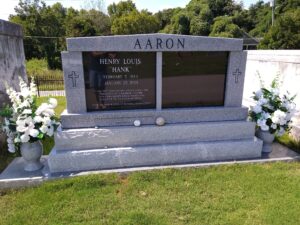
 On this day in 1793, King of France and Navarre from 1774 until 1791, then King of the French from 1791 to 1792, Louis XVI, was executed by guillotine at the age of 37 at the Place de la Révolution, now known as the Place de la Concorde in Paris. Born Louis Auguste de France, Duc de Berry on 23 August 1754 in the Palace of Versailles. Louis-Auguste was the third son of Louis, the Dauphin of France, and thus the grandson of Louis XV of France. His brothers and father predeceased Louis XV, thus Louis-Auguste became the new Dauphin. On 16 May 1770, at the age of fifteen, Louis-Auguste married the fourteen-year-old Habsburg Archduchess Maria Antonia (better known by the French form of her name, Marie Antoinette), his second cousin once removed and the youngest daughter of the Holy Roman Emperor Francis I and his wife, the formidable Empress Maria Theresa. Louis XV died on 10 May 1774 and Louis-Auguste Dauphin was crowned king on 11 June 1775 at the age of 20. Suspended and arrested as part of the insurrection of the 10th of August in 1792 during the French Revolution, he was tried by the National Convention and found guilty of high treason, the only king of France ever to be executed. Although Louis XVI was beloved at first, his indecisiveness and conservatism led some elements of the people of France to eventually view him as a symbol of the perceived tyranny of the Ancien Régime and gave him the nickname Oncle Louis (“Uncle Louis”). Louis was also nicknamed Louis le Dernier (Louis the Last), a derisive use of the traditional nicknaming of French kings.
On this day in 1793, King of France and Navarre from 1774 until 1791, then King of the French from 1791 to 1792, Louis XVI, was executed by guillotine at the age of 37 at the Place de la Révolution, now known as the Place de la Concorde in Paris. Born Louis Auguste de France, Duc de Berry on 23 August 1754 in the Palace of Versailles. Louis-Auguste was the third son of Louis, the Dauphin of France, and thus the grandson of Louis XV of France. His brothers and father predeceased Louis XV, thus Louis-Auguste became the new Dauphin. On 16 May 1770, at the age of fifteen, Louis-Auguste married the fourteen-year-old Habsburg Archduchess Maria Antonia (better known by the French form of her name, Marie Antoinette), his second cousin once removed and the youngest daughter of the Holy Roman Emperor Francis I and his wife, the formidable Empress Maria Theresa. Louis XV died on 10 May 1774 and Louis-Auguste Dauphin was crowned king on 11 June 1775 at the age of 20. Suspended and arrested as part of the insurrection of the 10th of August in 1792 during the French Revolution, he was tried by the National Convention and found guilty of high treason, the only king of France ever to be executed. Although Louis XVI was beloved at first, his indecisiveness and conservatism led some elements of the people of France to eventually view him as a symbol of the perceived tyranny of the Ancien Régime and gave him the nickname Oncle Louis (“Uncle Louis”). Louis was also nicknamed Louis le Dernier (Louis the Last), a derisive use of the traditional nicknaming of French kings.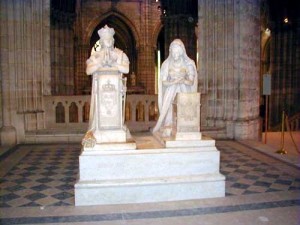
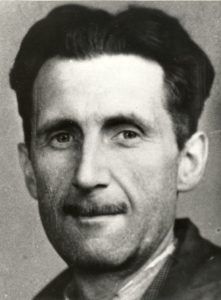 On this day in 1950, novelist, essayist, journalist and critic George Orwell died from a
On this day in 1950, novelist, essayist, journalist and critic George Orwell died from a 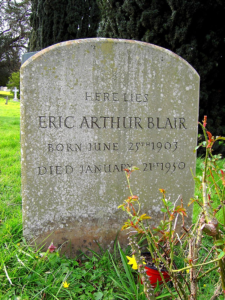 The Final Footprint
The Final Footprint 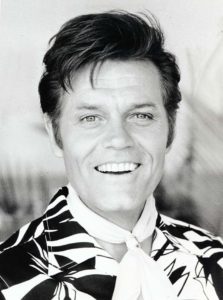 On this day in 1998, actor, director and producer Jack Lord died of congestive heart failure at his home in Honolulu, at age 77. Born John Joseph Patrick Ryan on December 30, 1920 in Brooklyn. Perhaps best known for his starring role as Steve McGarrett in the CBS television program Hawaii Five-O, which ran from 1968 to 1980. Lord was the first actor to play the character Felix Leiter in the James Bond film series, introduced in the first Bond film, Dr. No.
On this day in 1998, actor, director and producer Jack Lord died of congestive heart failure at his home in Honolulu, at age 77. Born John Joseph Patrick Ryan on December 30, 1920 in Brooklyn. Perhaps best known for his starring role as Steve McGarrett in the CBS television program Hawaii Five-O, which ran from 1968 to 1980. Lord was the first actor to play the character Felix Leiter in the James Bond film series, introduced in the first Bond film, Dr. No.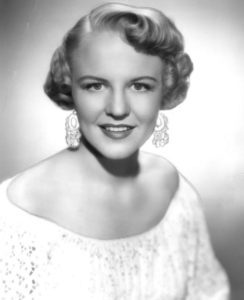 On this day in 2002, jazz and popular music singer, songwriter, composer, and actress Peggy Lee died of complications from diabetes and a heart attack in Bel Air, Los Angeles, at the age of 81. Born Norma Deloris Egstrom on May 26, 1920 in Jamestown, North Dakota. Her career spanned six decades. From her beginning as a vocalist on local radio to singing with Benny Goodman‘s big band, she forged a sophisticated persona, evolving into a multi-faceted artist and performer. During her career, she wrote music for films, acted, and recorded conceptual record albums that combined poetry and music. Lee was nominated for twelve Grammy Awards, winning Best Contemporary Vocal Performance for her 1969 hit “Is That All There Is?” In 1995 she was given the Grammy Lifetime Achievement Award.
On this day in 2002, jazz and popular music singer, songwriter, composer, and actress Peggy Lee died of complications from diabetes and a heart attack in Bel Air, Los Angeles, at the age of 81. Born Norma Deloris Egstrom on May 26, 1920 in Jamestown, North Dakota. Her career spanned six decades. From her beginning as a vocalist on local radio to singing with Benny Goodman‘s big band, she forged a sophisticated persona, evolving into a multi-faceted artist and performer. During her career, she wrote music for films, acted, and recorded conceptual record albums that combined poetry and music. Lee was nominated for twelve Grammy Awards, winning Best Contemporary Vocal Performance for her 1969 hit “Is That All There Is?” In 1995 she was given the Grammy Lifetime Achievement Award.
